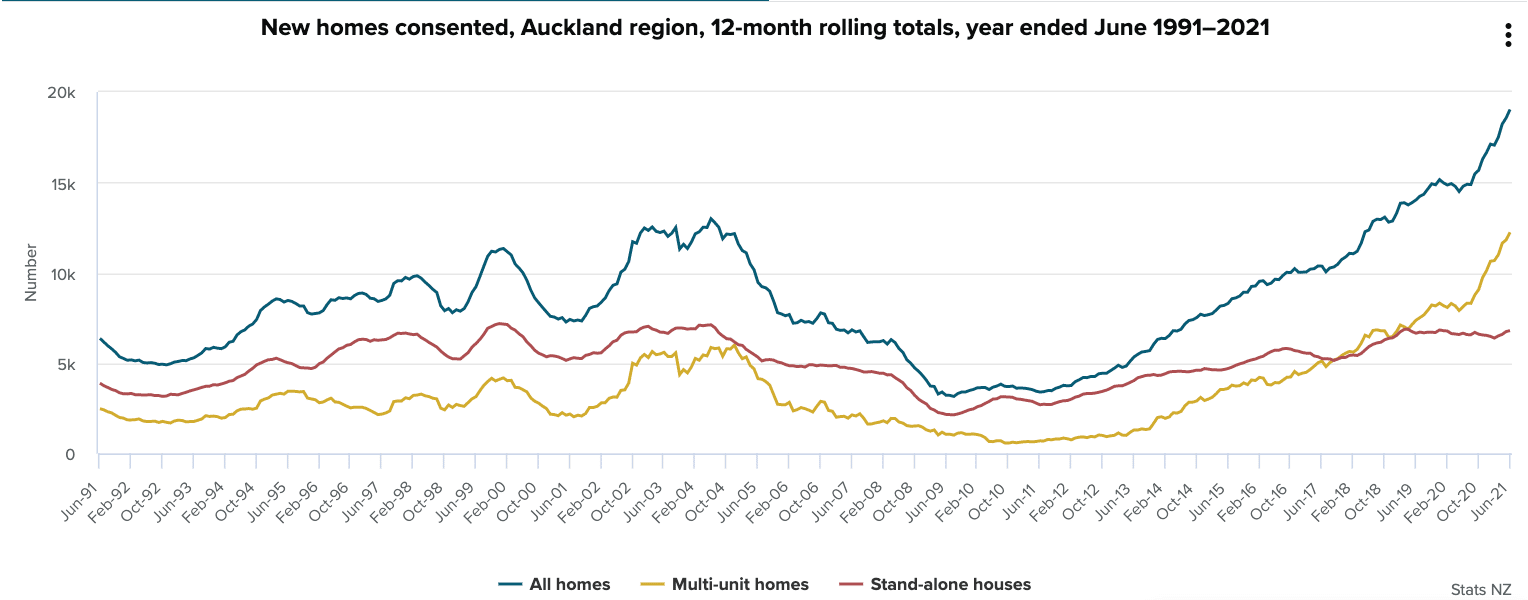Auckland Regional Committee member Daniel Shao, Development Manager at Woolworths Group discusses Auckland’s housing intensification.
It doesn’t seem like all that long ago when developers, homeowners, renters, lawyers and anyone else with an interest in property battled (or mediated) their way through the Auckland Unitary Plan process. The outcome of that process was a progressive (for its time) planning rule book that has shaped the development and growth of our biggest city since 2016 (when it became operative in part).
The impact the Unitary Plan has had on the “look and feel” of our neighbourhoods, commercial centres and urban form has been transformational. The removal of intensity controls meant that infill subdivisions went out of fashion overnight. Planning applications for three-storey buildings were no longer seen as “pushing the envelope” and their effects on the environment were suddenly no longer considered “more than minor”.
The development and construction sectors, and the design profession, have adapted quickly in this time. Housing typologies that were considered new or revolutionary a mere five years ago are now the norm and are being replicated throughout every corner of the city and beyond.
New homes consented have reached record levels since the Unitary Plan took effect. Notably, multi-unit homes have overtaken standalone dwellings post-Unitary Plan and the gap between the two is growing rapidly.

This period of significant growth in housing supply and shift towards smaller dwelling typologies have not resulted in a decrease in the average house price (or improved affordability). To the contrary, house prices have, until the beginning of this year, increased at a rate not seen since pre-GFC. This has been fueled by a number of factors, most notably the low cost of credit.
Against this backdrop, I turn to the current intensification plan changes that have been forced upon Auckland Council (and other Tier 1 councils) under the Resource Management (Enabling Housing Supply and Other Matters) Amendment Act 2021. These changes will have a significant and long-lasting impact on the form and character of our cities. While its intent is supported by many, the bluntness of the requirements have been the subject of much criticism and outcry.
The Government’s justification for these requirements is to rapidly accelerate the supply of housing, to help address issues with housing choice and affordability. I believe these changes will, over time, help with the supply of housing, once we’ve addressed other capacity constraints in terms of skilled labour, building materials and infrastructure. However, I am less optimistic that it will help to address the affordability of housing in our major cities.
It is difficult to measure the level of impact the Unitary Plan (and planning generally) has had on the significant growth (and the recent decrease) in house prices. On the other hand, financial levers, such as the availability of credit, have had a more direct impact on house prices. Indeed, despite numerous changes to planning instruments that were designed to increase the supply of housing and improve affordability, it was actually the changes to CCCFA (which were designed to reign in predatory lending for vulnerable borrowers) and the consequential changes in banks’ lending practices, that have brought house price inflation to an abrupt halt.
Up-zoning land can only take us so far in terms of delivering more affordable houses. Other factors, such as interest rates, cost of building and materials, and the desirability of property as a form of investment can have a much greater influence on the cost of housing and, in turn, housing affordability. That being the case, we should be realistic and appropriately focused in terms of the objective of the current intensification plan changes.
The trade-off we are making through these plan changes is not about, for instance, whether keeping an area as “special character” means forgoing an opportunity to make housing more affordable. Rather, the debate is about how we value choice relative to character. Let us not conflate intensity (and choice) with affordability.
Daniel Shao
Development Manager, Woolworths
Daniel recently joined Woolworths NZ as a Development Manager. In this role, he is responsible for the development of new Countdown Supermarkets, including sourcing sites and managing the design, consenting and delivery processes. Daniel comes from a planning background and maintains an active interest in current developments in the planning sphere. Daniel is a member of Property Council’s Auckland Regional Committee.


